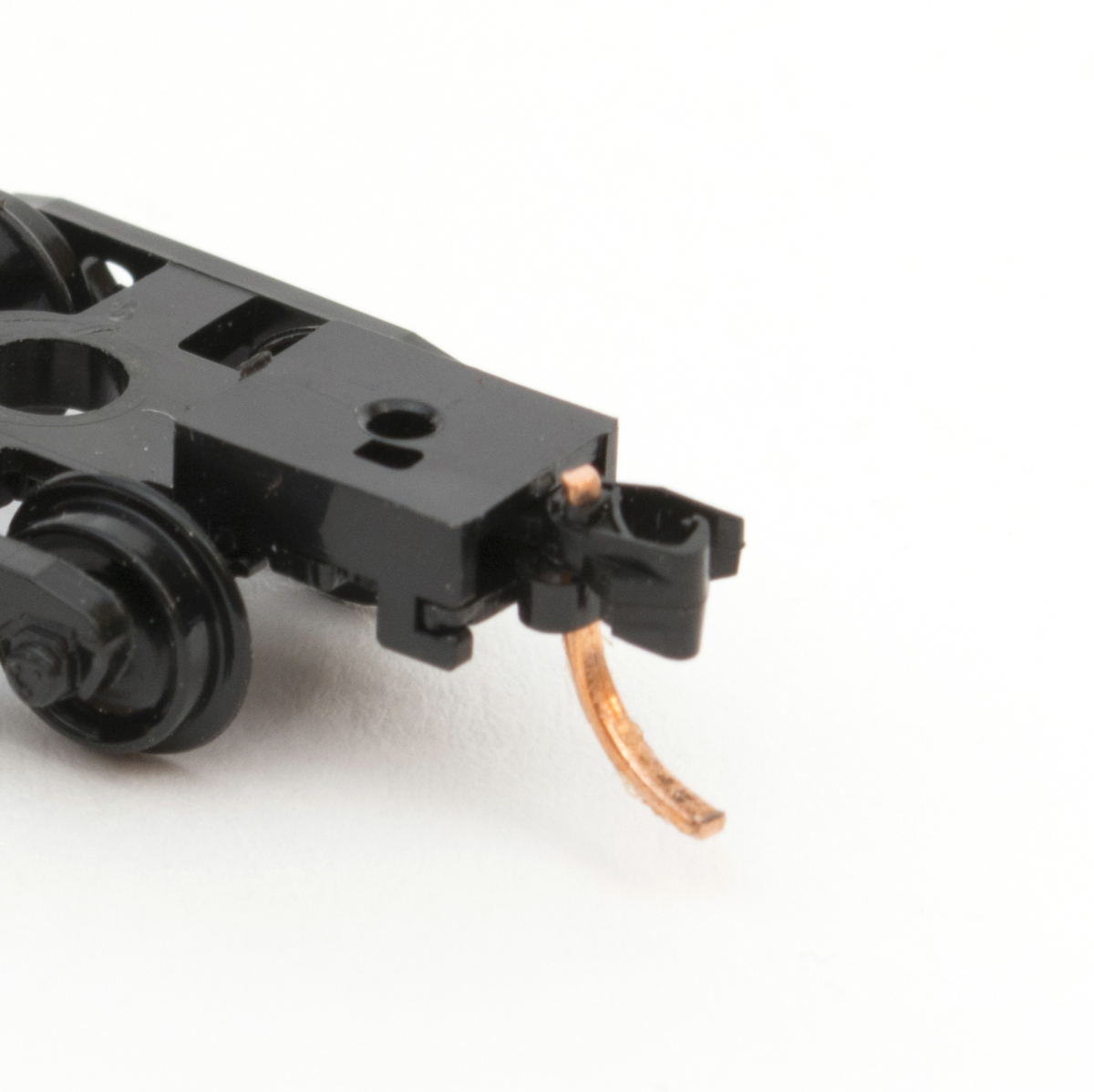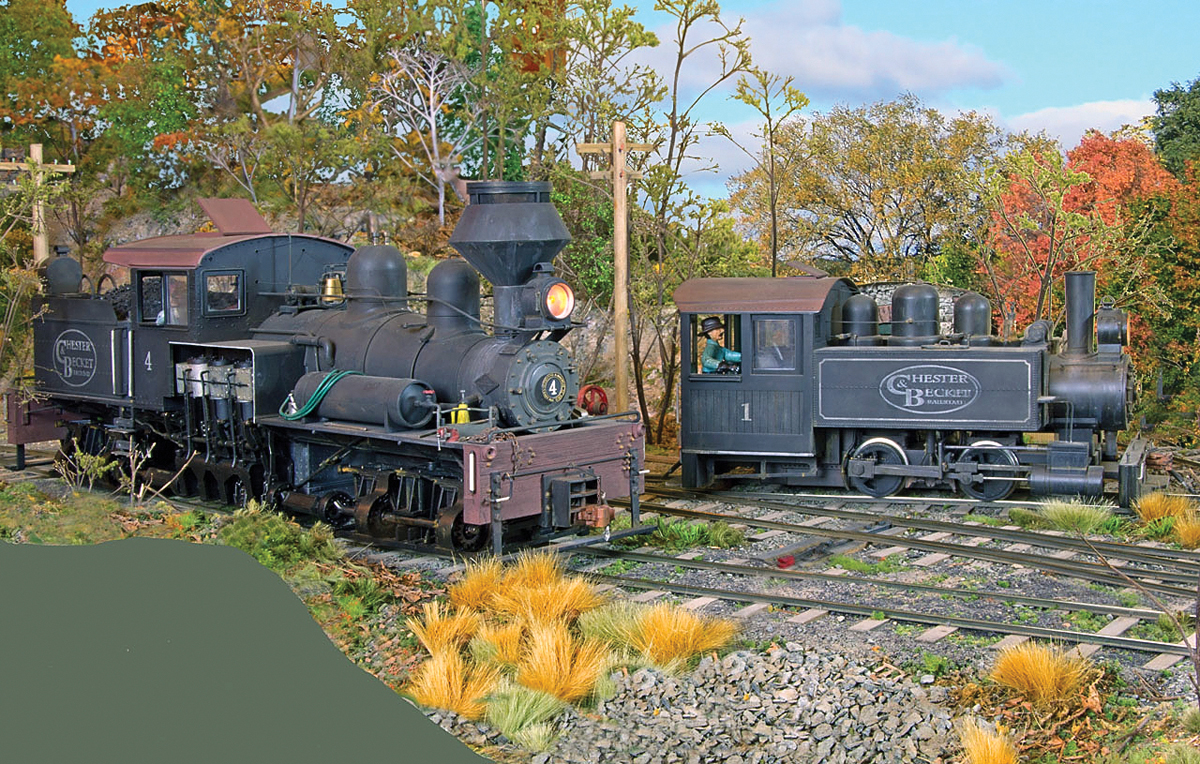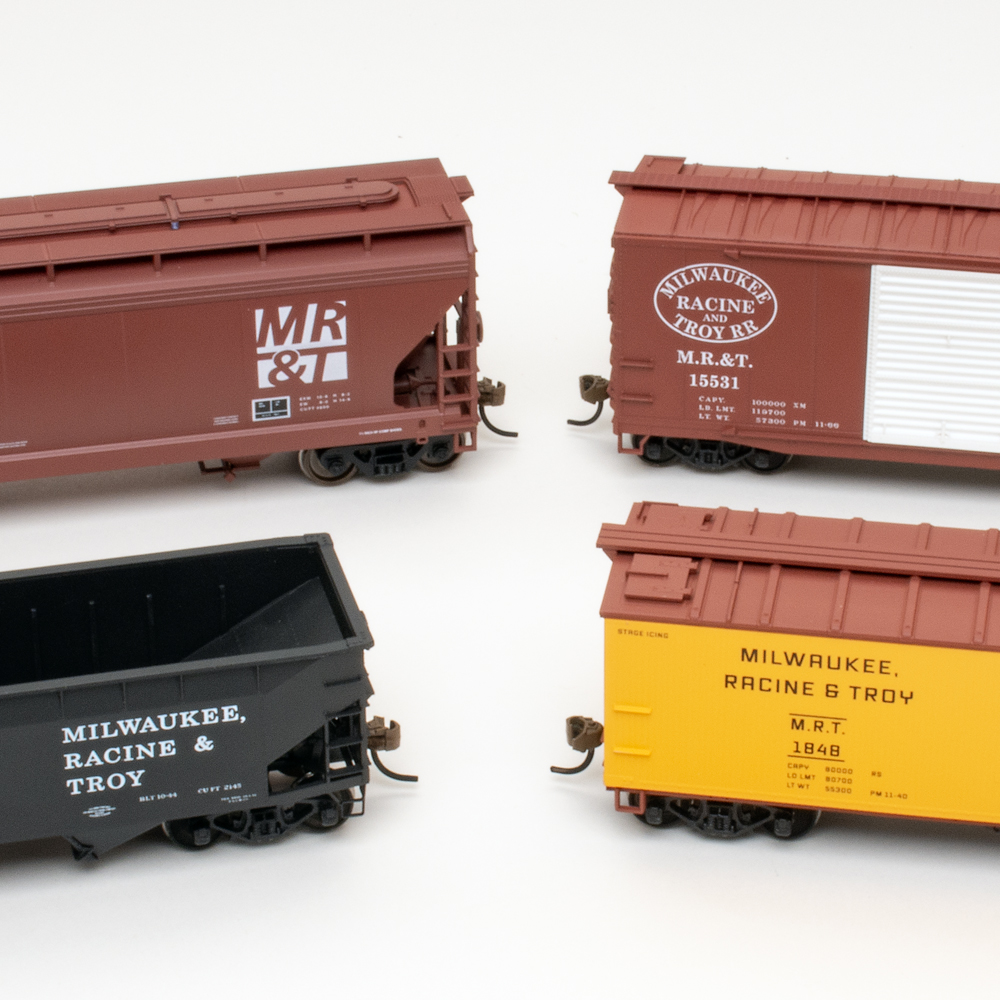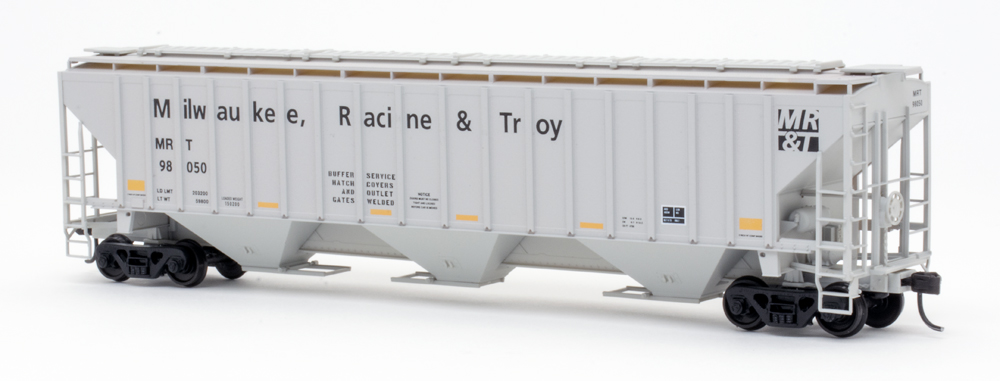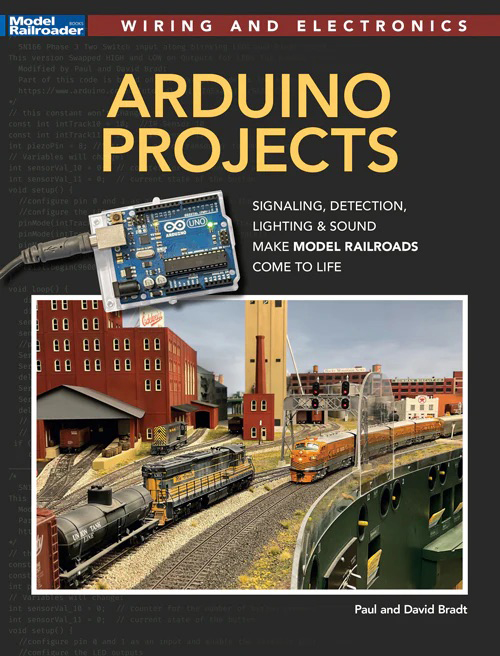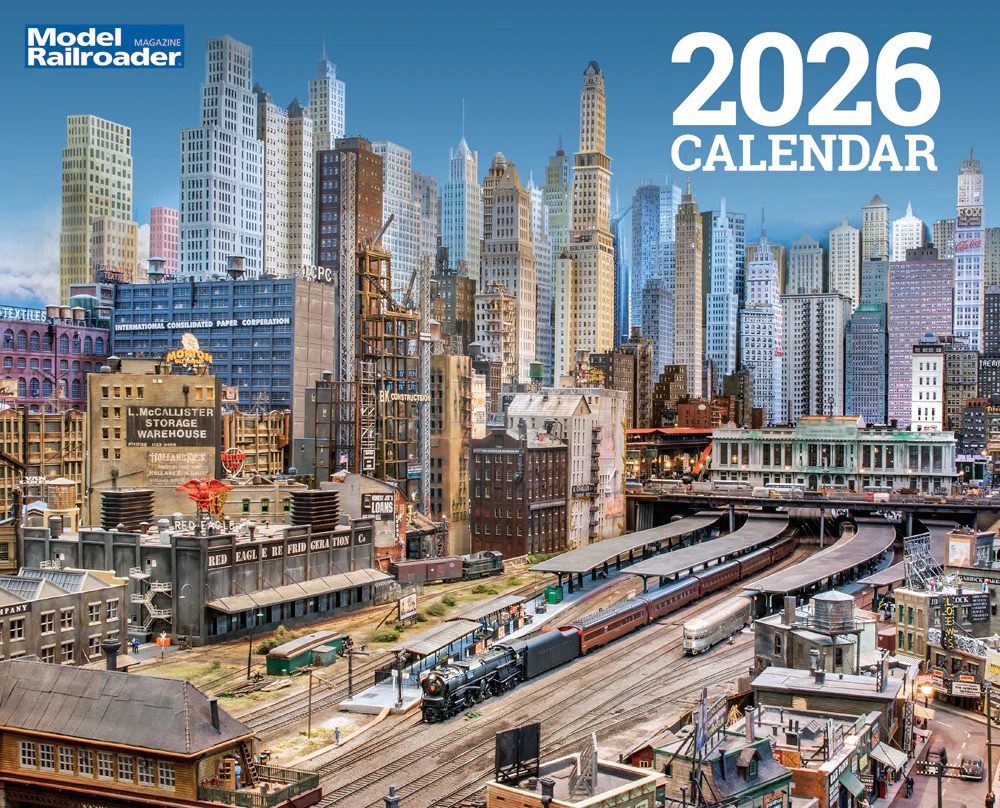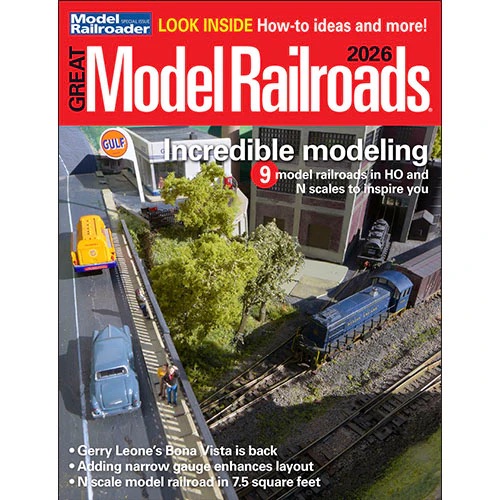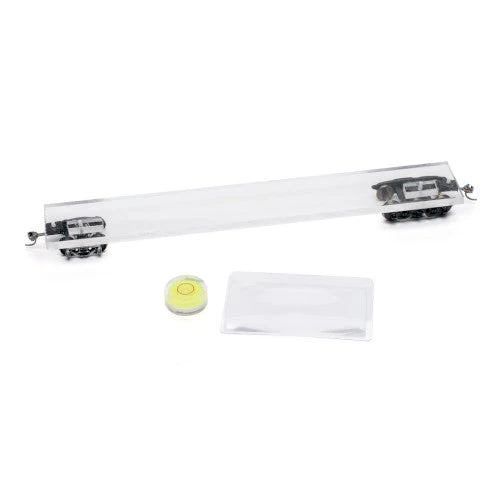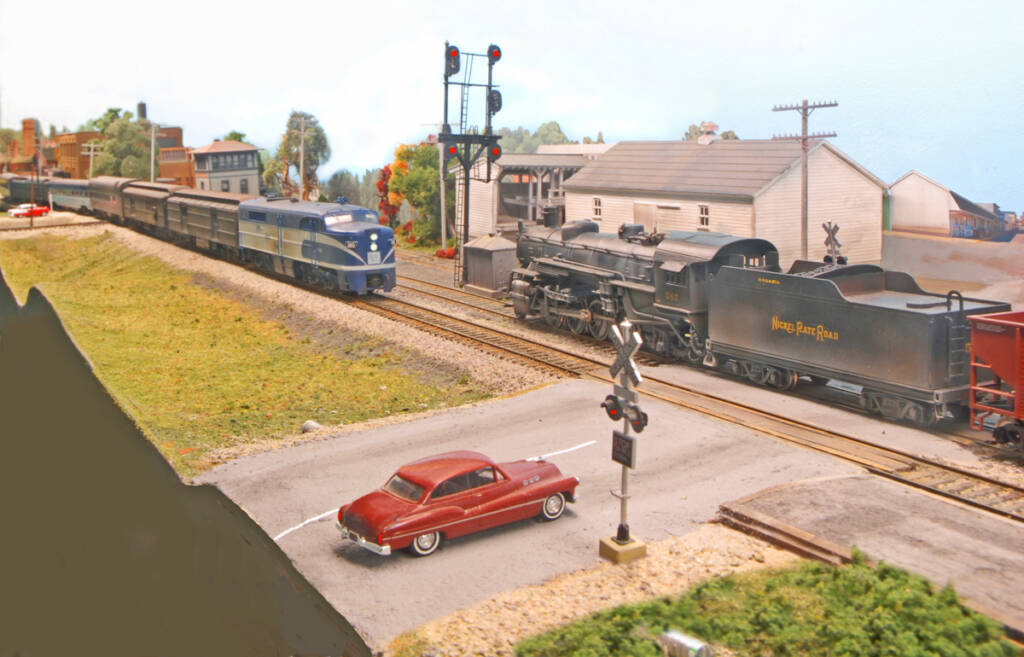
Q: The cover of the November 2025 issue of Model Railroader shows the signals for the west end of the Veedersburg, Ind., siding. The signal for entering the siding has no middle head so the best it could display is slow clear, but the signal for leaving the siding has a middle head and only single targets for the top and bottom, so it’s going to display a medium speed indication when cleared. Do other prototype switches have different speed restrictions for their diverging routes depending on the direction of travel or is this something unique to Nickel Plate Road? — Keith Frantz
A: I reached out to Contributing Editor Tony Koester. Here is his reply, which he wrote with Larry Ratcliffe:
That’s a very perceptive question, Keith. Railroad signaling aspects and meanings can become quite complex in a hurry, and model railroaders can’t be expected to remember all of the finer points when they encounter them only about once a month. The signals are on my layout display aspects according to the Nickel Plate Road practices, so here’s how we use the signals at Veedersburg, Ind.:
Eastbound trains encounter a two-head signal. The top head has red, yellow, and green lamps; the bottom head has just red and yellow lamps. The top head governs movements on the main line and the bottom head governs movements into the siding. If the siding switch is lined for the main, the Peoria & Eastern (P&E) crossing is clear, and the next two automatic signal blocks to the east are clear, then an approaching train will see green on the top head and red on the bottom head. (This is Automatic Block territory.)
If the first automatic block to the east is clear, but the next block is occupied, the signal will display yellow on the top head and red on the bottom head. If the siding switch is lined for the main but the next automatic signal block is occupied, both the top and bottom heads will be red. If the siding switch is lined for the siding, the P&E crossing is clear, the signal will display red on the top head and yellow on the bottom head. Since the siding is non-signaled and is not a main track, the bottom head can display yellow even if there is a train in the siding. Of course, they’ll see a red-over-red if the Iowa Scaled Engineering Interlocking in a Box software has determined a (virtual) P&E train is due.
Westbound trains on the main get by with a two-head signal on the left-hand mast on the bracket signal, but the bottom head always displays red. If the switch is lined for the siding, the P&E crossing is virtually occupied, or the automatic signal block west of the interlocking is occupied, the signal will display red on both signal heads. If the siding switch is lined for the main, the P&E is clear, and the next two automatic blocks west of the interlocking are clear, then the signal will display green on top and red on the bottom head. If these same conditions are met except the second automatic signal block west of the interlocking is occupied, the signal will display yellow on top and red on the bottom.
Westbound trains leaving the siding are governed by a signal with three heads on the right-hand mast on the bracket signal. Here the top and bottom heads of this signal always display red; the middle head has green and yellow lamps. If the siding switch is lined for the main, or the P&E crossing is occupied, or the first automatic signal block west of the interlocking is occupied, the middle head will be dark, resulting in the signal displaying red-over-dark-over-red.
If the siding switch is lined for the siding, the P&E crossing is clear, and the next two automatic signal blocks are clear, then the middle signal head will display green resulting in the signal displaying red-over-green-over-red. If these same conditions are met except the second automatic signal block west of the interlocking is occupied, the middle signal head will display yellow, resulting in the signal displaying red-over-yellow-over-red. As with the eastbound signal, the mainline signal will display red-over-red and the siding signal will display red-over-dark-over-red if the Interlocking in a Box software has determined a (virtual) P&E train is due.
Send us your questions
Have a question about model trains, full-size trains, or toy trains? Send it to AskTrains@Trains.com.






